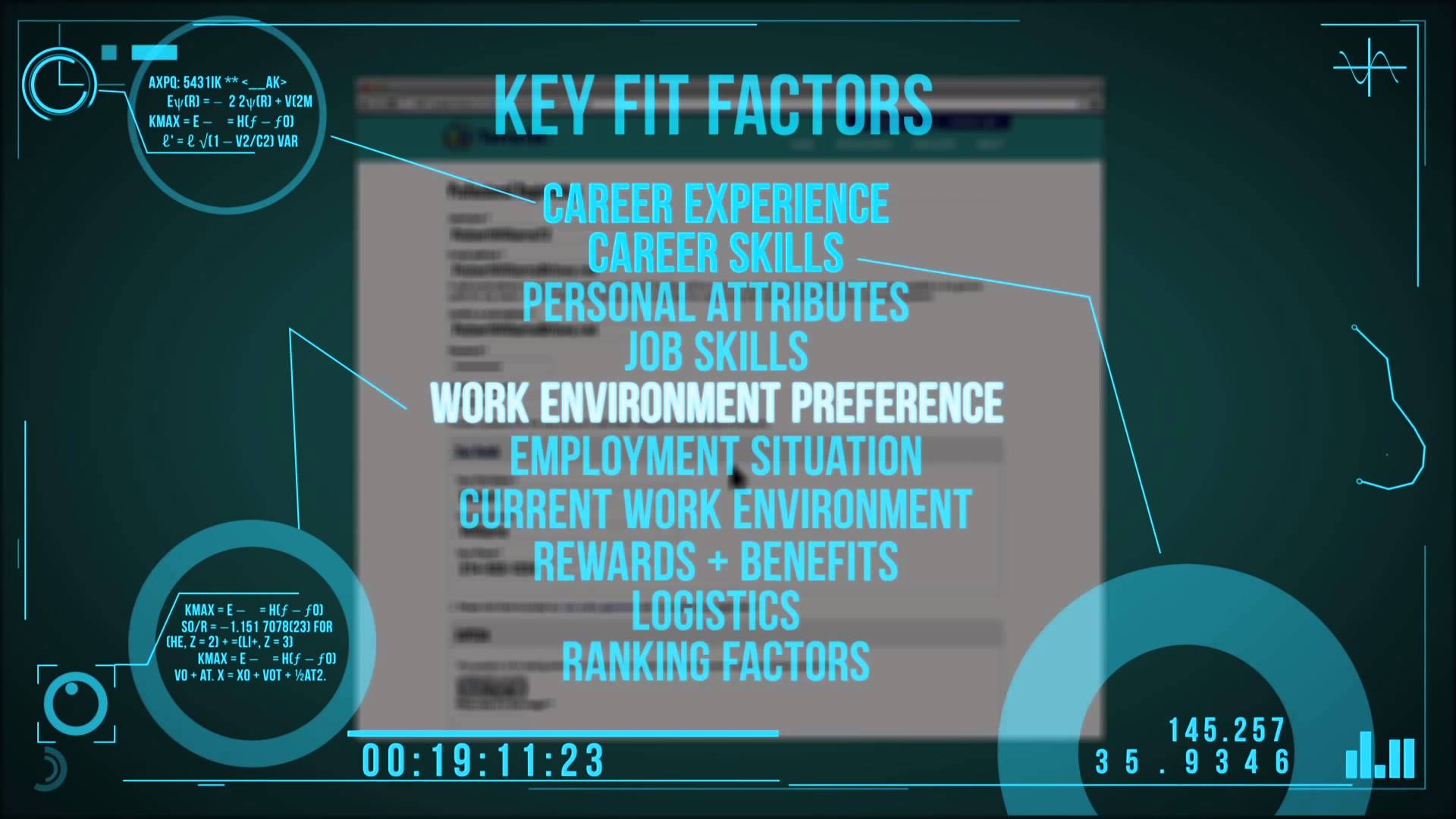the employee benefits broker manifesto
The Transition from Commissions to a Fee-for-Service Revenue Model
The objective of this manifesto is to bring awareness of a new solution to the employee benefits Broker, as a method to better retain his clients, grow his block of business and solve a very critical - but overlooked client problem - recruiting & hiring.
Since recruiting & hiring is a totally new concept to the Broker, the best way to explain it - so that it is easily understood, is to introduce it in the form of a story.
The story is about the relationship that exist between the Broker, the Headhunter and the Employer - and how a tool that was designed to expand the role of the Headhunter- ended up transforming the role of the Broker. But, what's interesting - is that the story is told from the perspective of a real Headhunter.
It all began with a simple aha-moment. I must confess that it was triggered by this TV commercial. But, it only became an actionable moment because of a combination of three things:
- I’ve made a pretty decent living as a Headhunter for almost three decades, so I understand how the recruitment Industry works.
- The individuals I recruit are in the employee benefits Industry, so I understand the business of delivering employee benefits services to employers.
- Historically, I've always been on the cutting edge of the latest technology and I was currently exploring, what I believe was the latest recruitment technology.
Those are also the reasons why I am uniquely qualified to tell this story of the relationship that exist between the Broker and the Headhunter; and how a new recruiting technology - which was designed for the Headhunter, will impact the role of the Broker.

If this was a game of chess, the Broker would be the Bishop, the Headhunter would be the Knight and the Employer would be the one who is actually playing the game. So, the Employer uses both the Broker and the Headhunter as a lethal combination to gain a strategic advantage over his local competitors – where the object of the game is to steal the best talented performers away from each other.
Unfortunately, in the real world, the Broker and the Headhunter do not collaborate their efforts - they operate independently.
The best real-world example of the Broker/Headhunter collaboration is the relationship that exist between the marketing and sales departments in an organization. When both departments collaborate: they generate more sales, because they generated better quality leads, because the right marketing message was matched with the right prospects.

The Broker, The Headhunter & The Employer
Like a marketer, the Broker sees his role as being strategic - his job is to attract & retain the talented performers who are essential to the growth of the Employer - and he does this through the employee benefits programs he represents.
The Headhunter’s role is similar to sales, where his methods are tactical in nature. His job is to successfully recruit the specific talented performers who the Employer wants to hire. He uses a variety of available tools and tricks-of-the-trade techniques he has learned in executing his business tactics.
So, if the Broker does not understand the tricks of the trade of the Headhunter, and the Headhunter does not understand the strategic aspect of employee benefits – how does this relationship benefit the Employer?
And, that is the problem - the Employer ends-up spending a large sum of money on the initiatives of both the Broker and the Headhunter - specifically on employee benefits and on talent acquisition!
That is also why the recruiting app was developed – the intent is to expand the capabilities of the Headhunter, in becoming a strategic internal partner to the Employer.
That's because the Headhunter's business model was disrupted multiple times – starting with the fax machine, then the job boards, then the applicant tracking system, then the career page on the Employer’s website, then the internal recruiter, and social media as the most recent.
But, in spite of multiple disruptions, the resolve of the Headhunter remains unwavering.

the recruiting app
Interestingly, the RecruiterPro is a recruitment application that was developed by an individual from the Broker's side of the equation. It was designed with traditional headhunting tactics and smart intelligence technology.
The headhunting capabilities enable the app to find talented performers in places where internal recruitment methods are not physically looking for talented performers. And, the smart intelligence technology allows it to identify value in the job applicants who are most often overlooked by the traditional screening process.
As a Headhunter, I have seen many “killer recruitment apps” come and go - but this particular concept was light-years ahead of everything else on the market, that I’ve seen. In the hands of the Headhunter, I remain convinced that it will save the Employer a significant amount of time by shortening their hiring process and a significant amount of dollars in reduction of talent acquisition cost.
So, clearly the RecruitePro app was designed to transform the Headhunter from generating revenues from only one source - placement fees, to multiple sources: Some of the new sources include:
- From the job vacancies that are being filled in-house by the Employer
- From leveraging of his talent network into qualified leads for the Employer’s employee referral programs
- Recurring revenue from building his Headhunter recruitment book-of-business
- Transition his revenue model from contingent placement fees to up-front retainer fees
can't teach old dogs a new trick
It took a number of months to fully understand the meaning of the old adage - you cannot teach an old dog a new trick.
Maybe it was because of the message or it could have been the messenger, but the adoption by the Headhunter has been below my expectations.
The obvious reason is that in order to capitalize on the App’s full potential in benefiting himself, he would need to embrace its advanced capabilities, as a first step. And secondly, he would also need to slightly alter his tricks-of-the-trade tactics as well as his revenue model.
But unfortunately, the Headhunter view this new solution as a possible conflict to his present business model - he remains intellectually committed to his belief, that:
- The right individual for a job vacancy is not actively in the market for a new job, as such his role is to create the demand for the job vacancies the employer is unable to fill in-house.
- His method of sourcing, screening, selecting and nurturing top quality talent are superior to all others, including: internal recruiters, job boards, social media, automation or artificial intelligence.
- His business model remains the best option for the employer - it allows the Employer to interview his best candidates free of charge. The Employer will pay his standard headhunter fee – only if the Employer chose to hire one of his candidates.

Instead of spending my time trying to teach old dogs a new trick, why not educate someone who does not have any knowledge of the old ways of recruiting?
That was when I decided to shift my focus and introduce the recruiting App to the Broker instead of the Headhunter.
Like the Headhunter, the Broker also has direct access to the employer, but he does not know any tricks-of-the-trade recruiting knowledge.
Here’s what I thought during my aha-moment - if the recruiting app is in the hands of the Broker, he would be able to do both the attract & retain parts as well as the recruit & hire parts of helping the employer win the war for talent.
It is the app that will give the Broker a huge advantage over the Headhunter. But it’s the results of the app that will produce efficiency and cost savings for the employer, which will make the Broker more valuable than the Headhunter in the eyes of the employer.
"The stone that the builder refuse, will always be the head cornerstone"
Bob Marley, 1970

Why should the Broker take business away from the Headhunter, when the Headhunter is not directly competing with the Broker?
The obvious answer is that he will not encounter any resistance from the Headhunter, because the Headhunter will not view the Broker as a serious competitor. If anything, he'll view the Broker the same as he views the internal recruiter, the job boards and social media platforms, such as LinkedIn - they are all focused on the job vacancies the Employer is filling in-house. Historically, the Headhunter never has, and probably never will view anyone as a serious competitor, when compared to his tricks-of-the-trade in the art of headhunting..
What the Brokers is not aware of - is that recruiting is a $120 billion dollar Industry. And, 90% of those dollars are spent on job vacancies that are filled in-house by most employers.
This should be a "wake-up" call for the Broker, the next time one of his clients tells him that they do not have the budget to pay the fees for his services.
Because he is now aware that his clients are spending a significant amount of dollars on solving problems on the recruiting & hiring side. And, by introducing the right solution, those same dollars can be re-allocated to pay the Broker, in terms of consulting fees for his services.

Here are the top reasons why the Brokers should capitalize on the opportunity to help his clients solve recruiting & hiring challenges.
His relationship with the Employer is not permanent - he can be replaced by the Employer with another Broker at any time. So, in order to remain in his role, the Employer has to be happy with his present performance.
Also, his business model was previously disrupted when Obamacare became the law of the land, and the manner in which Zenefits entered the employee benefits space a few years ago. In addition, he now has to focus on:
- Compliance issues
- Payroll issues
- HR admin-platforms
And, on top of all that - the carriers has reduced their commissions and his earning potential, as a result.
THE NEW METHODS TO BUILD YOUR BOOK
Since the Broker is working harder today and is also making less money, that is another reason why he should not hesitate to improve his value to the Employer by solving recruiting & hiring problems. Besides, he will not need to:
- Make any changes in his normal activities or to his business model
- Know any old-school recruiting tricks, to use the recruiting app.
- Study for and pass a State examination, in order to get a license to give recruiting advice to the Employer.
Most important, he can significantly or possibly double the revenue from his present book of business by simply adding recruiting & hiring as an additional service.
This is the new method for the Broker to build his employee benefits book of business - by concurrently building his recruitment book of business.
WHAT THE BENEFITS EXPERTS SAY
Since this story is told from the perspective of a Headhunter, it might be important to also know the thoughts of the employee benefits experts.
The employee benefits experts are all advising the Broker on the specific changes that he needs to make in his own business, in order to survive in the employee benefits Industry!
- The first expert tells the Broker that he needs to re-invent his own business into a 21st. Century model - employing non-insurance Industry tactics
- The second expert tells the Broker that technology is the wave of the future, so he needs to invest in more technology solutions
- The third expert tells the Broker that the Internet has changed the B2B methods for finding new customers, so he needs to invest in more digital marketing
The one strategy which all the experts agree - is that the Broker needs to transition his revenue model from commissions to a fee-for-service
THE FEE-FOR-SERVICE REVENUE MODEL
I also agree with the benefits experts that the Broker should transition his business from commissions to a fee-for-service revenue model.
So, how does the recruiting & hiring solution differentiate from those of the benefits experts?
Since each of the benefits experts solutions require the Broker to invest additional dollars into his business in order to generate future revenue - what we recommend - is that the Broker should introduce the RecruiterPro recruiting & hiring solution to his clients, as a first step. When his clients are using the app, the Broker will generate immediate revenue, so he will create the funds that are needed to invest in any one of the benefits experts' solution of his choice.
And since the recruiting & hiring solution will also produce immediate talent acquisition cost-savings for his clients, those cost-saving dollars can be re-allocated to pay the Broker in terms of consulting fees for his services.
The recruiting & hiring solution is not a replacement - it complements each of the the benefits experts' solution, and at the same time, it organically transition the Broker from commissions to a fee-for-service business model.
Copyright 2017, A.W. Forrester Co. - Disclaimer